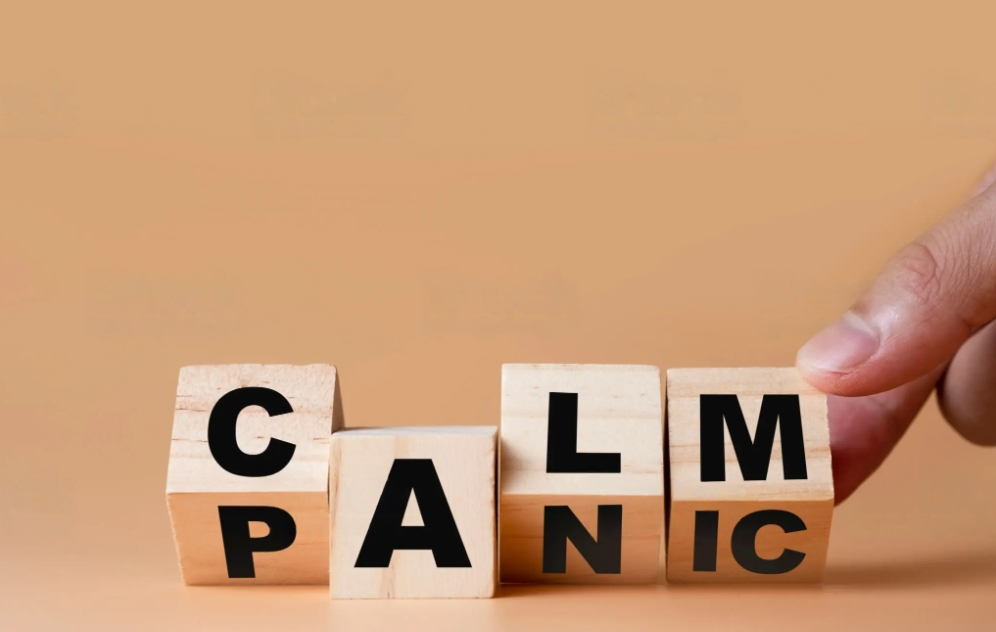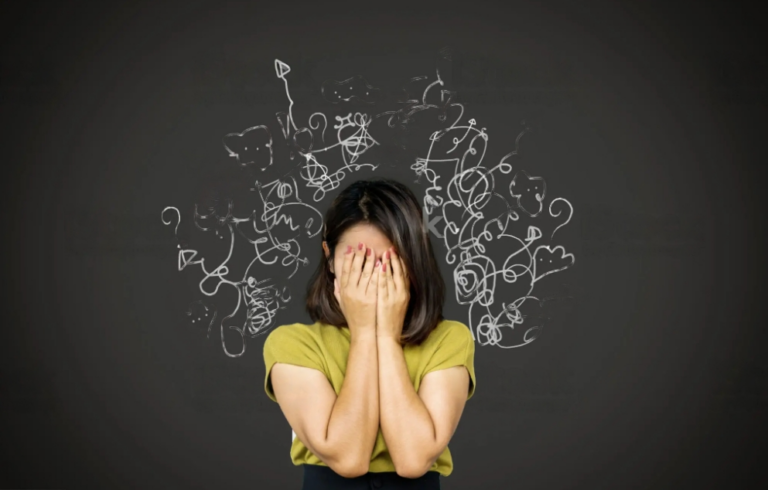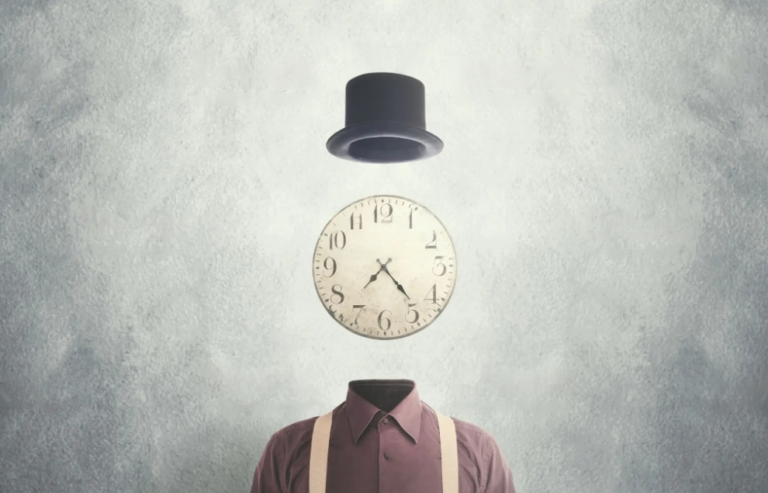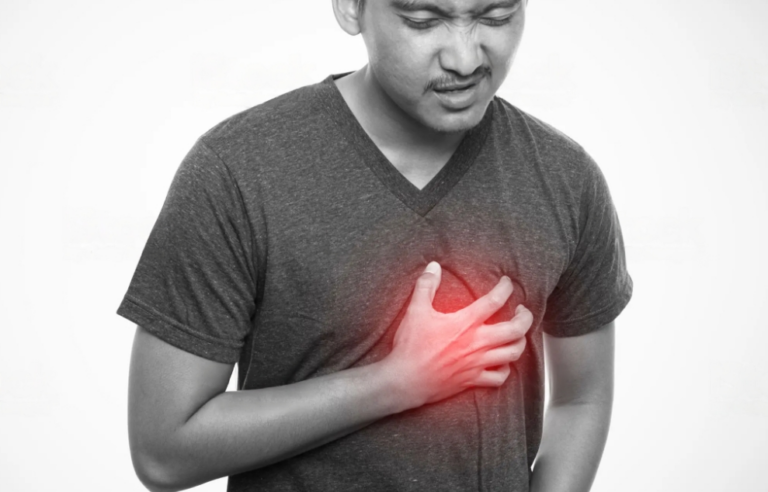What is a Panic Attack? Understanding the Symptoms, Triggers, and Treatment Options
What is Panic Attack? Understanding the Symptoms, Triggers, and Treatment Options
What is Panic Attack?
Panic attacks are intense episodes of fear and anxiety that can manifest physically and psychologically. They often come on suddenly and reach their peak within a short period, typically lasting a few minutes. Individuals experiencing a panic attack may feel a sense of impending doom, chest pain, heart palpitations, shortness of breath, dizziness, trembling, or other distressing symptoms. These episodes can be overwhelming and disruptive, leading to significant distress and impairment in daily life.
Understanding panic attacks is crucial for several reasons. First and foremost, it is essential for recognizing and diagnosing panic disorder, a mental health condition characterized by recurrent and unexpected panic attacks. By understanding the nature of panic attacks, individuals and healthcare professionals can identify the symptoms of panic disorder, seek medical treatment, and prevent further attacks.
Furthermore, recognizing the difference between panic attacks and other medical conditions is crucial for accurate diagnosis. Panic attacks can mimic symptoms of various physical health issues such as heart problems or respiratory disorders. Understanding panic attacks helps individuals and medical professionals differentiate between panic disorder and other potential causes, leading to appropriate treatment and management strategies.
Mental health plays a significant role in panic attacks and panic disorder. While panic attacks can occur in anyone, individuals with pre-existing anxiety disorders or a family history of panic disorder may be more susceptible to experiencing them. Recognizing the connection between mental health and panic attacks can guide individuals toward seeking appropriate support, managing underlying anxiety, and addressing co-occurring conditions such as depression. In addition, organizations like the Anxiety and Depression Association of America and the National Institute of Mental Health provide valuable resources and information to aid individuals in understanding and managing panic attacks.
Panic attacks are intense episodes of intense fear and anxiety that can have a significant impact on mental health. Understanding panic attacks is crucial for diagnosing panic disorder, differentiating them from other medical conditions, and providing appropriate support. By recognizing the importance of mental health in relation to panic attacks, individuals can seek the necessary help and resources to manage their symptoms effectively. In addition, increased awareness and understanding of panic attacks contribute to a more informed and compassionate society, promoting overall well-being.
What is a Panic Attack? Understanding the Symptoms
Description of the physical symptoms
Panic attacks can be an incredibly distressing experience characterized by a combination of physical and psychological symptoms. The physical symptoms can vary from person to person but often include chest pain, sweating, trembling, and a racing heartbeat. These physical sensations can be alarming and may lead individuals to fear that they are experiencing a life-threatening event.
In addition, individuals experiencing panic attacks often report a profound dread or fear of dying. The combination of physical symptoms and overwhelming psychological distress can lead people to believe they are facing a life-threatening situation. It is important to note that while panic attacks can be extremely distressing, they are not life-threatening in themselves.
Explanation of the psychological symptoms
Furthermore, The physical symptoms of a panic attack also bring about psychological symptoms that can significantly impact everyday life. One of the most common psychological symptoms is an intense fear of losing control or going crazy or even a heart attack. During a panic attack, individuals may feel as though they have no control over their thoughts, emotions, or actions. This fear can be paralyzing and contribute to heightened anxiety during subsequent attacks.
Understanding panic attack symptoms is crucial for differentiating them from other medical conditions and seeking appropriate help. In addition, it is important to remember that panic attacks are not indicative of weakness or character flaws but are instead a manifestation of an underlying anxiety disorder. Seeking professional support can provide individuals who develop panic disorder with the tools and strategies to manage their symptoms and improve their quality of life.
Most panic attacks encompass a range of physical and psychological symptoms that can significantly impact individuals’ well-being. Recognizing the physical symptoms, such as chest pain, sweating, and trembling, is essential for identifying panic attacks. Additionally, understanding the psychological symptoms, such as fear of losing control or dying, can help individuals seek appropriate support and reassurance. By increasing awareness and understanding of panic attack symptoms, we can foster a more compassionate and informed society that supports people with panic disorder in their journey towards managing their anxiety effectively.
Discussion of how panic attacks differ
Panic attacks and anxiety are terms often used interchangeably, but they refer to distinct experiences with some overlapping symptoms. Understanding the differences between the two is important to provide appropriate support and treatment.
Panic attacks are intense episodes of overwhelming anxiety that typically occur suddenly and reach their peak within minutes. A combination of physical and psychological symptoms characterizes them, including a racing heartbeat, shortness of breath, chest pain, dizziness, trembling, and a sense of impending doom. Repeated panic attacks can be indicative of a panic disorder, which is a type of anxiety disorder.
On the other hand, anxiety disorders are associated with a general sense of heightened anxiety rather than acute episodes. They often develop gradually and may be triggered by specific situations or stressors. While anxiety shares some symptoms with panic attacks feel anxious, they may also involve persistent worrying, restlessness, difficulty concentrating, and muscle tension.
It is important to note that both panic attacks and anxiety can be related to various underlying factors, including other mental health conditions, traumatic events, or even certain medical conditions. Therefore, seeking medical help is crucial in order to receive an accurate diagnosis and appropriate treatment.
What is a Panic Attack? Understanding the Triggers
Explanation of common triggers for panic attacks
Panic disorder is a type of anxiety disorder distinguished by repetitive and unforeseen episodes of panic attacks. These panic attacks can be debilitating and have a significant impact on a person’s daily life. Therefore, understanding the nature of panic disorder and its triggers is crucial in effectively managing and addressing this condition.
A panic attack is an abrupt occurrence of extreme fear or distress that escalates to its maximum intensity within a matter of minutes. It is accompanied by various physical and psychological symptoms, such as a rapid heartbeat, shortness of breath, dizziness, trembling, and a choking feeling. People with panic disorder experiencing panic disorder symptoms repeatedly, and the fear of having more panic attacks can worsen their anxiety and overall well-being.
While panic attacks can seemingly occur without a specific trigger, there are common factors that can set off or exacerbate these episodes. Stress is a significant trigger for panic attacks, as it can overload the body’s stress response system. Caffeine, which is found in coffee, tea, and certain beverages, can also contribute to panic attacks by increasing heart rate and triggering feelings of restlessness. Finally, phobias, such as fear of enclosed spaces or heights, can induce panic attacks in susceptible individuals.
Identifying and understanding these triggers is essential in managing panic disorder. By recognizing the factors that can precipitate panic attacks, individuals can work towards reducing their impact on everyday life. Treatment options for panic disorder may include therapy, medication, and lifestyle modifications to address triggers and develop coping strategies.
Panic disorder is characterized by recurrent panic attacks that can significantly impact an individual’s well-being. While panic attacks may seemingly occur without warning, common trigger panic attacks such as stress, caffeine, and phobias can contribute to the onset or worsening of these episodes. Recognizing these triggers and seeking appropriate treatment can help individuals with panic disorder better manage their condition and improve their quality of life.

Discussion of how panic attacks can be triggered by specific situations or experiences and What causes panic attacks
A panic attack can be a frightening and overwhelming experience. It is a sudden episode of intense fear or discomfort that manifests with various physical and psychological symptoms. Therefore, understanding the symptoms of a panic attack is essential in recognizing and seeking appropriate help for this distressing condition.
The symptoms of a panic attack can vary from person to person but commonly include a rapid heartbeat, difficulty breathing, chest pain, dizziness, trembling, and a sense of impending doom. Some individuals may also experience hot flashes or chills during a panic attack. These symptoms can be so severe that they mimic the physical sensations of a heart attack, leading to further distress.
Panic attacks worse when left unaddressed or untreated. They can significantly impact an individual’s mental health and overall well-being. Experiencing sudden attacks of fear overwhelms lead to avoidance behaviors, which can further restrict a person’s everyday life and activities. Therefore, it is crucial to reach out to a mental health professional if you or your family members are experiencing symptoms before the next panic attack strikes again.
Panic attacks often begin in early adulthood and can be triggered by a traumatic event or periods of increased stress. Seeking professional help can provide guidance and support in managing panic attacks. A mental health professional can help individuals understand the underlying causes and develop coping strategies to better navigate these episodes and improve their quality of life, and may prevent panic attacks in the future.
What is Panic Attack? Understanding the Panic Attack Treatment
Overview of self-care practices that can help manage panic attacks
Self-care practices play a crucial role in managing panic attacks and promoting overall well-being. By incorporating various strategies into their daily routine, individuals can effectively alleviate symptoms of panic disorder and improve their quality of life.
One important aspect of self-care for panic disorder is to manage stress. Stress has been identified as a significant trigger for panic attacks, so learning to manage stress can help reduce the frequency and intensity of these episodes. In addition, engaging in activities that promote relaxation techniques, such as deep breathing exercises, meditation, or yoga, can be beneficial in reducing overall stress levels and promoting a sense of calm.
Research suggests that certain medications can be effective in treating panic disorder and its associated symptoms. For example, selective serotonin reuptake inhibitors (SSRIs) and serotonin-norepinephrine reuptake inhibitors (SNRIs) are commonly prescribed antidepressants that have been found to be effective in reducing the frequency and severity of panic attacks. These medications work by balancing neurotransmitters in the brain, helping to regulate mood and anxiety.
In addition to medication, psychotherapy can also be an essential component of treatment for panic disorder. Cognitive-behavioral therapy (CBT) is a commonly used therapeutic approach that focuses on identifying and modifying negative thought patterns and behaviors associated with panic attacks. This type of therapy can help individuals develop coping mechanisms, challenge irrational thoughts, and gradually expose themselves to feared situations, ultimately reducing the frequency and intensity of panic attacks.
Engaging in regular physical activity, maintaining a healthy diet, and getting enough sleep are also vital self-care practices that can contribute to overall well-being and help manage panic attacks. In addition, these lifestyle factors have been shown to have a positive impact on mental health and can enhance the effectiveness of other treatment strategies.
It’s important to remember that self-care practices can complement professional treatment, but they should not replace medical advice or therapy. Instead, consulting with a healthcare provider to create an individualized treatment plan that combines self-care strategies with appropriate medical interventions for optimal management of panic disorder is recommended.
Explanation of the different treatment options for panic attacks
Panic disorder is a treatable condition, and there are various approaches available to help individuals manage and overcome it. However, treatment for panic disorder typically involves a combination of therapy, medication, and lifestyle changes. Therefore, working with a healthcare professional to determine the most suitable treatment plan based on individual needs is important.
Talk therapy
Such as cognitive-behavioral therapy (CBT) is a commonly used approach for treating panic disorder. CBT helps individuals identify and modify negative thought patterns and behaviors that contribute to panic attacks. Through therapy sessions, individuals learn coping mechanisms and relaxation techniques to manage anxiety and prevent panic attacks.
Exposure therapy
It is another effective technique used in the treatment of panic disorder. This approach involves gradually exposing individuals to situations or triggers that typically provoke anxiety and panic. By facing these fears in a controlled environment, individuals can learn to tolerate and cope with the anxiety, ultimately reducing the frequency and severity of panic attacks.
Lifestyle changes
It can also play a significant role in managing panic attacks. Adopting stress-management techniques, such as regular exercise, practicing mindfulness or meditation, and getting adequate sleep, can help reduce overall anxiety levels. Avoiding triggers such as caffeine or certain medications that may exacerbate symptoms is also important.
In some cases, medical professionals may prescribe medication to alleviate symptoms of panic disorder. Antidepressants, such as selective serotonin reuptake inhibitors (SSRIs) or benzodiazepines, may be prescribed to help regulate mood, reduce anxiety and treat depression. It’s important to note that medication should always be taken under the guidance of a healthcare professional.
In addition to formal treatment methods, developing coping strategies can empower individuals to deal with panic attacks when they occur. Some coping strategies may include deep breathing exercises, engaging in grounding techniques, using positive self-talk, or seeking support from loved ones. It’s important to tailor these strategies to personal preferences and find what works best for each individual.
Discussion of how to develop coping strategies for dealing with panic attacks
Panic attacks can be overwhelming and disruptive, but with the right coping strategies, you can regain a sense of control and manage the symptoms effectively. In this article, we will discuss how to develop coping strategies for dealing with panic attacks and emphasize the importance of seeking medical help when needed.
Acknowledge and Accept
Recognize that panic attacks are a real and treatable condition. Understand that experiencing one panic attack does not necessarily indicate a chronic panic disorder. Allow yourself to accept your feelings and remind yourself that you are not alone
Seek Medical Help
If you suspect you have panic disorder or experience severe panic attacks, it is crucial to seek medical assistance. Consult a healthcare professional who can provide a thorough evaluation, including a physical exam, to rule out any underlying medical conditions.
Develop Coping Strategies
Breathing Techniques
Practice deep breathing exercises to help regulate your breathing and calm your body during a panic attack. Focus on inhaling slowly through your nose and exhaling deeply through your mouth.
Grounding Techniques
Use grounding techniques, such as focusing on your senses or engaging in a simple repetitive action, to help anchor yourself in the present moment and redirect your attention away from anxious thoughts.
Mindfulness and Relaxation
Incorporate mindfulness and relaxation techniques, such as meditation or progressive muscle relaxation, into your daily routine. These practices can help reduce overall stress and increase your resilience in managing panic attacks.
Self-Care and Healthy Lifestyle
Prioritize self-care activities that promote overall well-being, such as regular exercise, adequate sleep, and a balanced diet. Taking care of your physical and mental health can contribute to better stress management.
Conclusion
In Conclusion, panic attacks are intense episodes of fear and anxiety that can have a significant impact on mental health. Understanding the symptoms, triggers, and treatment options for panic attacks is essential for accurate diagnosis, appropriate support, and effective management. Recognizing the physical and psychological symptoms of panic attacks helps individuals and healthcare professionals differentiate between panic disorder and other potential causes, leading to proper treatment and management strategies. By increasing awareness and understanding, we can foster a more informed and compassionate society that supports individuals with panic disorder in their journey towards managing their anxiety effectively. Seeking professional help, developing coping strategies, and incorporating self-care practices are vital steps towards improving the quality of life for those experiencing panic attacks.
FAQs
1. How long to recover from panic attack?
Recovery time from a panic attack varies, but it typically takes a few minutes to hours to feel calm again.
2. How to stop panic attacks at night?
To stop panic attacks at night, try deep breathing, relaxation techniques, and creating a soothing sleep environment.
3. Can you faint from panic attack?
Fainting can occur during a panic attack, but it’s not common. Most panic attacks do not lead to loss of consciousness.
4. How to stop a panic attack in public?
To stop a panic attack in public, focus on deep breathing, grounding techniques, and positive self-talk. Removing yourself from the triggering situation can also help.
5. What is the treatment in an emergency room for panic attack?
In an emergency room, treatment for a panic attack may include reassurance, monitoring vital signs, and, if necessary, administering medication to alleviate symptoms.
References
Panic attack vs. anxiety attack: What is the difference? (2022, May 17). www.medicalnewstoday.com. https://www.medicalnewstoday.com/articles/321798#:~:text=Panic%20and%20anxiety%20attacks%20both
Mayo Clinic. (2018, May 4). Panic attacks and panic disorder – Diagnosis and treatment – Mayo Clinic. Mayoclinic.org. https://www.mayoclinic.org/diseases-conditions/panic-attacks/diagnosis-treatment/drc-20376027
Mayo Clinic. (2018, May 4). Panic attacks and panic disorder – Symptoms and causes. Mayo Clinic. https://www.mayoclinic.org/diseases-conditions/panic-attacks/symptoms-causes/syc-20376021
Holland, K. (2018, May). What Triggers Anxiety? 11 Causes That May Surprise You. Healthline; Healthline Media. https://www.healthline.com/health/anxiety/anxiety-triggers#triggers
Jeanie Lerche Davis. (2007). Panic Attack Symptoms. WebMD; WebMD. https://www.webmd.com/anxiety-panic/guide/panic-attack-symptoms
woman panic attack symptoms





